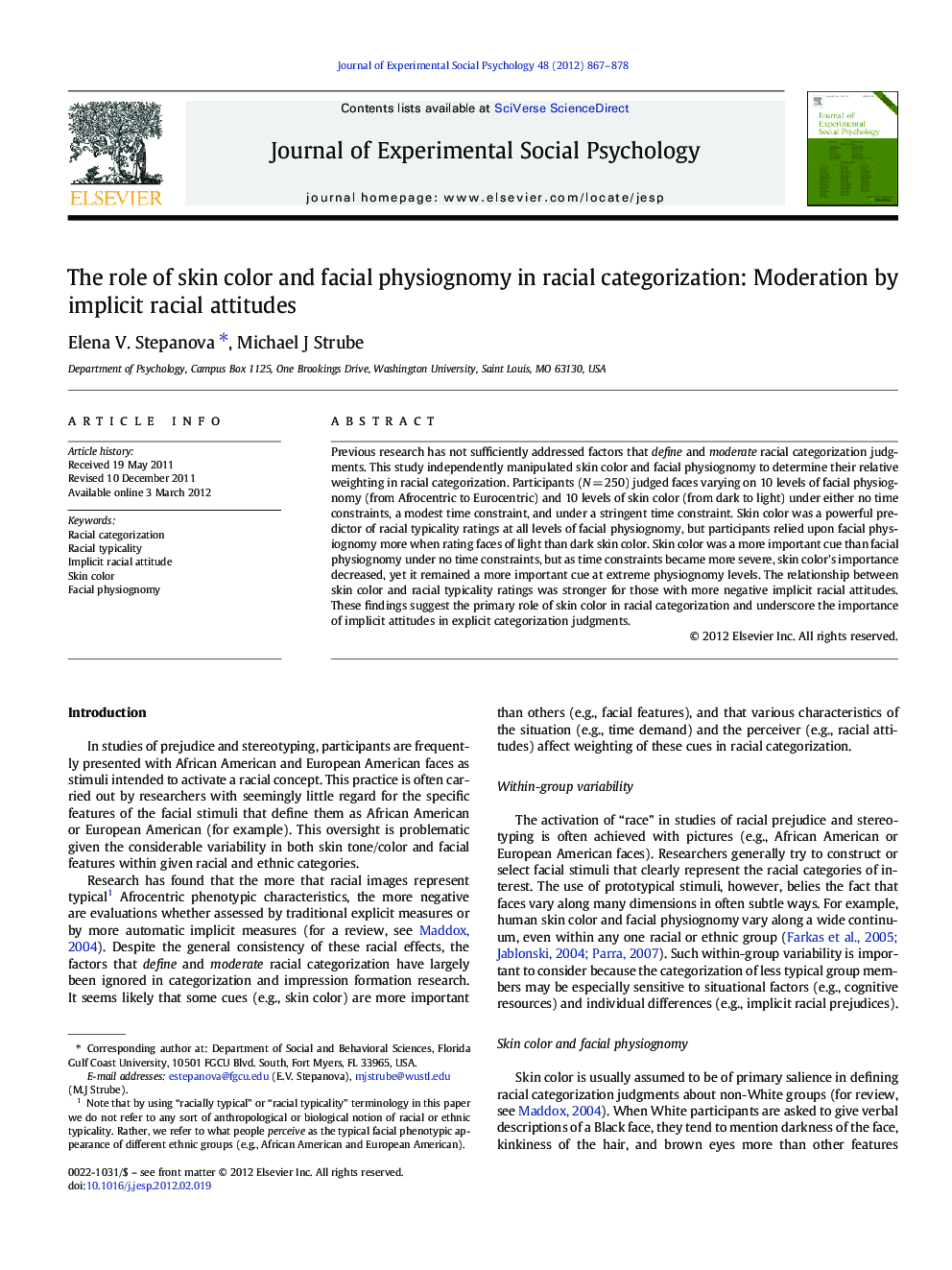| کد مقاله | کد نشریه | سال انتشار | مقاله انگلیسی | نسخه تمام متن |
|---|---|---|---|---|
| 948280 | 926460 | 2012 | 12 صفحه PDF | دانلود رایگان |

Previous research has not sufficiently addressed factors that define and moderate racial categorization judgments. This study independently manipulated skin color and facial physiognomy to determine their relative weighting in racial categorization. Participants (N = 250) judged faces varying on 10 levels of facial physiognomy (from Afrocentric to Eurocentric) and 10 levels of skin color (from dark to light) under either no time constraints, a modest time constraint, and under a stringent time constraint. Skin color was a powerful predictor of racial typicality ratings at all levels of facial physiognomy, but participants relied upon facial physiognomy more when rating faces of light than dark skin color. Skin color was a more important cue than facial physiognomy under no time constraints, but as time constraints became more severe, skin color's importance decreased, yet it remained a more important cue at extreme physiognomy levels. The relationship between skin color and racial typicality ratings was stronger for those with more negative implicit racial attitudes. These findings suggest the primary role of skin color in racial categorization and underscore the importance of implicit attitudes in explicit categorization judgments.
► We study the effects of skin color and facial features in racial categorization.
► Skin color has a primary role in racial categorization.
► People rely on facial features more when rating light than dark faces.
► Skin color was a more important cue under time constraints.
► Those with a greater implicit racial bias are more likely to rely on skin color.
Journal: Journal of Experimental Social Psychology - Volume 48, Issue 4, July 2012, Pages 867–878